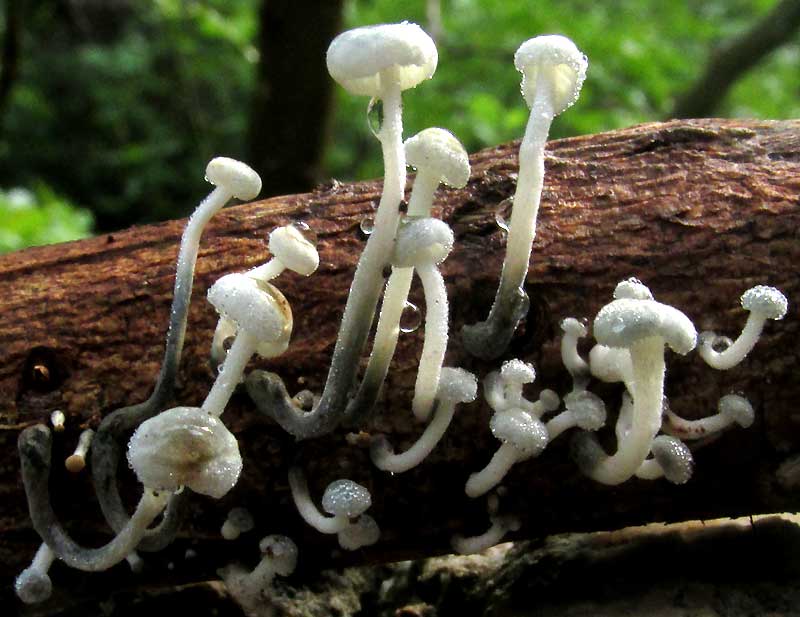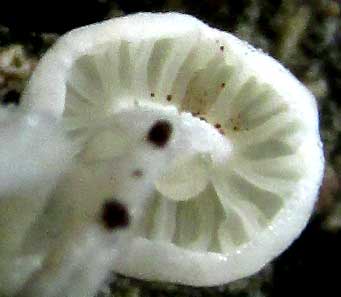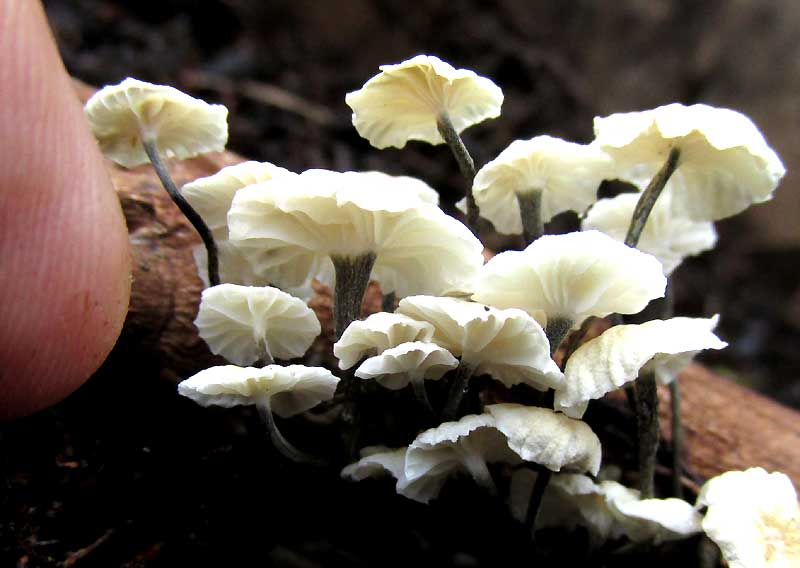Excerpts from Jim Conrad's
Naturalist Newsletter
Entry issued on August 9, 2019, from the forest just west of Tepakán; elev. ~9m (~30 ft), N21.053°, W89.052°; north-central Yucatán state, MÉXICO
BLACK-STALKED MARASMIUS
Here well into the rainy season nearly every afternoon a storm deposits at least a little rain, sometimes just a mist, sometimes a shower and sometimes a lot. Litter on the forest floor stays saturated. Normally it's too dry here to see many mushrooms, but that's not the case now, though not many species are represented, and mostly they're so small that most people don't notice them. One such is shown below:

That little colony sprang up overnight after a heavy rain. Note the white stems darkening toward their bases. A shot showing spore-producing gills on a cap's underside is shown below:

The twig was so small that I carried it home and kept it in a can in the shade, so I could watch what happened to the mushrooms. Mainly, during the dry days they tended to shrivel so that I was sure they'd died, but with the next rain they resuscitated, though after three or four days the stems became slender and black, and the caps enlarged somewhat, as shown below, with my finger for scale.

*UPDATE: I couldn't identify this mushroom even to genus level. It wasn't until years later when the online iNaturalist website's AI-aided identification feature was starting to be fairly good at identifying mushrooms, that I could recognize this as the Black-stalked Marasmius, TETRAPYRGOS NIGRIPES.
The Black-stalked Marasmius occurs mainly in eastern North America, but also less frequently farther south in the Americas, plus here and there elsewhere in the world. Michael Kuo of MushroomExpert.Com says that this species is fascinating because, instead of its stem base expanding into the typical extensive network of mycelia expanding into a decaying substrate, its stem is directly inserted into what it's growing on, usually a decaying leaf or twig. It appears to arise from nothing.